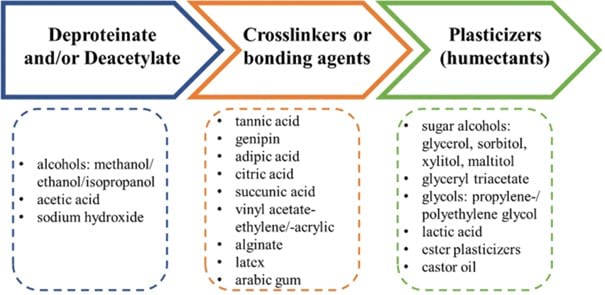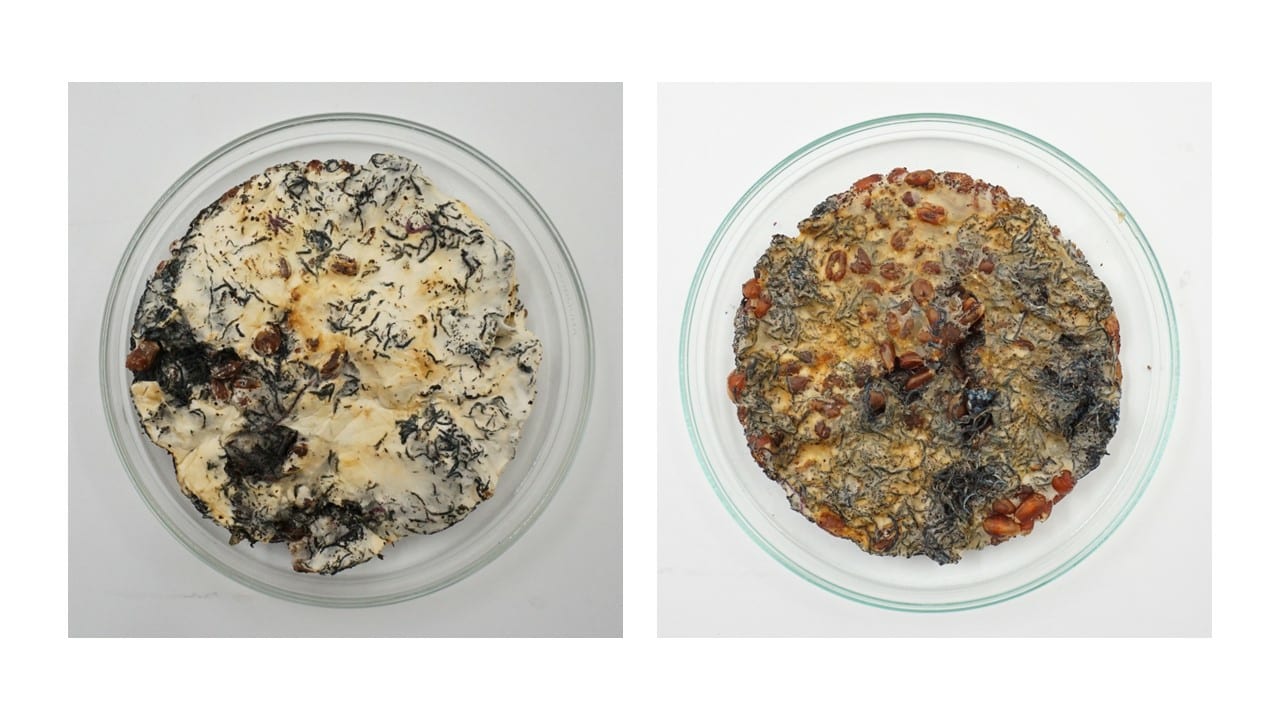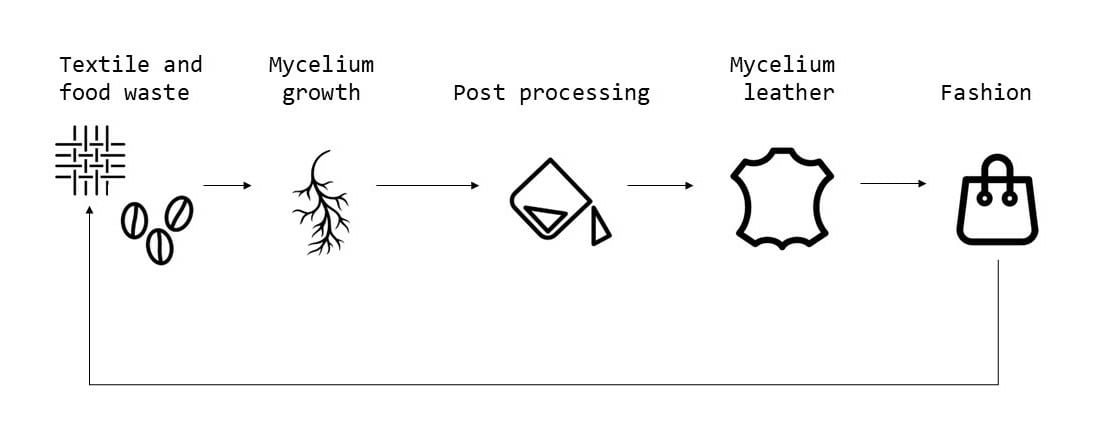Video: Tutorial of how to make the Purhyphae composite leather, a mycelium leather grown on textile and food waste. The Purhyphae Project.
Making a mycelium leather composite¶
During the substrate assays, I observed that mycelium growing on textile waste and food waste could grow very thick and colonize the entiere petri dish, not leaving any space with air. However, it would not entierely eat the fibers and fibers would persist in the mycelium and waste mix. This gave me the idea to make a composite mycelium leather (instead of a pure mycelium resulting from the complete digestion of the waste).
Now that I had satisfying growth, I had to find out what post processing I could apply to transform the live mycelium into mycelium leather.

Scheme: Compounds used in the treatment of mycological tissue for material applications, Vanderlook 2021.
After reading Vanderlook 2021, I figured out I needed to heat press the mycelium, plasticize it and coat it. An optinal step of deacetylation followed by crosslinking is possible before plasticizing. The overall information about the process was very vague so I had to go trough trial and error to find out what process would work at my scale.
Deacetylation attempts¶
I wanted to try how deacetylation followed by crosslinking would affect the quality of the mycelium. I attempted dipping a composite mycelium sample in pure ethanol for 2 hours followed by a saturated citric acid solution bath for 1 hour.

Image: oyster mycelium grown on denim textile waste, coffee grounds and wheat grain, put in a 30% glycerol bath and, in one of the cases, deacetylated and put for crosslinking (right). The deacetylated sample was weaker.
Though the samples I used for these tests were of very bad quality, the deacetylation followed by crosslinking steps seemed to weaken the quality of the mycelium. Even if I could probably find a way to have better results, I decided to abandon the deacetylation experiments due to lack of time.
Monstruosities¶
During my many attempts of finding the adequate post processig, I tested many different prototypes that had grown more or less strongly on different kind of substrates, deacetylation vs no deacetylation, dyeing the samples with pomagranate ink and indian inks, and different concentrations of glycerol for plasticizing. And not all the results led to a beautiful outcome. Here is a little overview of my fails, my little museum of monstruosities.
Final post processing¶
After trying various different post processings, I came out with this protocol working for most mycelium samples:
- heat press the live mycelium 3x for 20 sec at 150°C between 2 baking paper sheets,
- put it in a 20-40% (depending on the mycelium) glycerol bath overnight,
- dry at 35°C for 8 hours,
- coat with melted beeswax,
- heat press 3x for 20 sec at 150°C to make the beeswax layer even.

Image: Mycelium from G. lucidum (reishi), P. ostreatus (oyster) and Omphalatus nidiformis, grown on agar after the glycerol bath (left) and after finished postprocessing (right).
In the end, here is the process I came out with for the upcycling of textile waste into mycelium composite textile.

Chart: upcycling of textile waste from the fashion industry for the growth and production of mycelium composite material, final process.